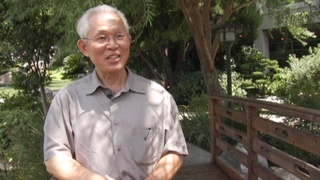Interviews
Social life in Livingston versus San Francisco
My friends were all Japanese Americans (in San Francisco). I had one, David Golden, a Jewish boy named David Golden, who was outside the Japanese group. That was during junior high school. When I went to high school, I knew my classmates, but I was not included in their social events, they would be talking about the dances they went to, they would be talking about the different things they did. But I was never invited, so I did not experience that with them. So, I felt excluded.
So, I don’t think there was that much difference in terms of a social openness for me, in Livingston it was all segregated, yes. But when I went to public school in Livingston, although the community, Yamato colony, had an understanding with the town people that they would not have anything competitive in town. That means no barber shop, no Japanese food stores, and still they have not a single store in town that caters to the Japanese Americans.
So they had an agreement there, but my friends were Caucasians and I was amazing. I had one black, and a few Mexican friends, but most were Caucasians, and we used to play baseball together, I was in the same scout troop with them. So in spite of the fact that there were these agreements of segregation, the people in Livingston were very friendly to me. In San Francisco, the people were friendly to me, but they had hierarchy, they had segregated groupings. So I did not participate, except through sports, I did not participate in a social life.
Date: March 4, 2005
Location: California, US
Interviewer: Florence Ochi, Art Hansen, Yoko Nishimura
Contributed by: Watase Media Arts Center, Japanese American National Museum
Explore More Videos

Racial make-up of plantation camps
An expert researcher and scholar on Japanese immigrant clothing.

Tea at the San Francisco Peace Treaty (Japanese)
(1916-2019) Master of chado.


Growing up in segregated schools
(1919 - 2015) Nisei who served in World War II with the 442nd Regimental Combat Team


Discrimination faced in San Francisco (Japanese)
(b. 1937) A war bride from Yokohama

Parents
(b. 1934) Award-winning Disney animation artist who was incarcerated at Topaz during WWII

Tanforan Assembly Center
(b. 1934) Award-winning Disney animation artist who was incarcerated at Topaz during WWII

Father’s Postwar Barber Career
(b. 1934) Award-winning Disney animation artist who was incarcerated at Topaz during WWII

Facing housing discrimination in Rhode Island
(1934–2018) Japanese American designer, educator, and pioneer of media technologies
